More and more of us are equipped with solar stations, such as Sunology, Sunethic, Beem, etc. While these stations can significantly reduce our electricity bills, there is often a surplus of underutilized production, particularly due to the lack of batteries. Who better than a battery specialist to meet this need? Today, I invite you to discover the EcoFlow PowerStream solution, which optimizes energy production and consumption. Often presented as a balcony solution, it is actually suitable for any type of solar installation. Let's discover it without further ado… Unboxing the EcoFlow PowerStream solutionThe heart of the EcoFlow PowerStream system is the hybrid microinverter designed by the manufacturer: The packaging clearly presents its role in the solar installation: it is connected between the solar panels and an electrical outlet. As is, the system allows the electricity produced by the solar panels to be fed back into the home's electrical system. Just like the microinverters in solar stations. Nothing new so far. But the EcoFlow PowerStream can also work with a branded battery, as well as connected outlets: in this case, the PowerStream will be able to automatically send the generated electricity to the devices requiring power, or recharge the battery to release the electricity later when needed, such as at night. No more wasted energy!A small detail: note the 10-year warranty and IP67 certification, allowing it to be placed even outdoors! This allows it to be placed as close as possible to the solar panels if desired. Inside the box, you'll find the EcoFlow PowerStream, along with a protective case, a wall mounting kit, an MC4 connection cable, and instructions for use.The inverter is rather sleek, all gray metal, with the brand name printed on the top. It looks a bit like my Mac Mini :p The enclosure is quite compact, like most micro inverters: 242 x 169 x 33 mm, and weighs about 3 kg.The bottom has rubber pads to ensure stability when placed on a shelf. The EcoFlow PowerStream can also be wall-mounted using the included mounting plate.
On the front, an indicator light will indicate the system status: green (the system is operating normally and supplying power), white (the battery is charging), yellow/red (indicates a problem).
Finally, on the back are the various connectors, as well as the wireless communication antenna. These very different sockets allow the inverter to be connected to solar panels, a battery, and the mains. The protective case is primarily there to ensure ventilation for the inverter if it is placed somewhere. If it is wall-mounted, only the mounting plate will be required.

An important detail: the small tool housed in the protective case. It will allow you to disconnect the various plugs from the EcoFlow PowerStream. Once inserted, they hold very securely and will be very difficult to remove without this tool.
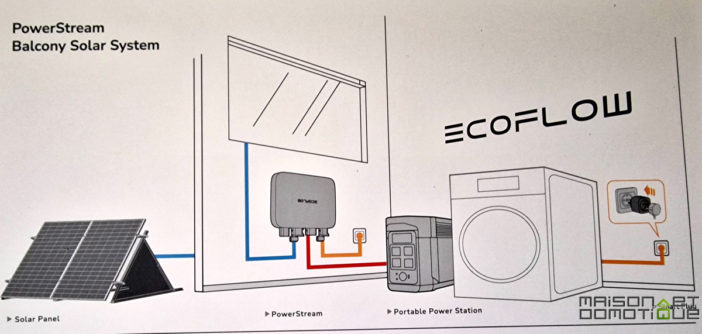
The inverter comes with an adapter for MC4 plugs. These are standard plugs, which are found on all solar panels. The cable has two positive and negative inputs: the inverter is equipped with two MPTT controllers, allowing it to manage, for example, two 400Wp panels (with a maximum of 55V and 13A).

Next comes the power cable, to plug the EcoFlow PowerStream into an electrical outlet. This cable will allow the inverter to inject the generated electricity into the home's electrical system. It's the same principle we've already seen for solar stations: the electrons in the electricity go the shortest route. The electricity produced by the solar panels will automatically power the nearest appliances, bypassing the electricity meter, thus allowing you to benefit from free electricity.

To fully utilize the solution with an EcoFlow battery, you'll need a special cable to connect the inverter to the battery. The manufacturer doesn't automatically provide it, as this cable will vary depending on the type of battery used: three cables are available, depending on whether you have a Delta, Delta Pro, or River battery. Please note: with the River, the system will be unable to recharge the battery, unlike with other models.

Here, I have a cable for an Ecoflow Delta 2 or Delta 2 Max battery. Different lengths are also available, especially for wall-mounting the inverter. Here, the cable is just long enough to place the inverter on the battery (or mount it right next to it).

Finally, there are the smart plugs, still branded EcoFlow. The manufacturer is thus building an entire ecosystem for energy management, and is setting the standard for home automation:
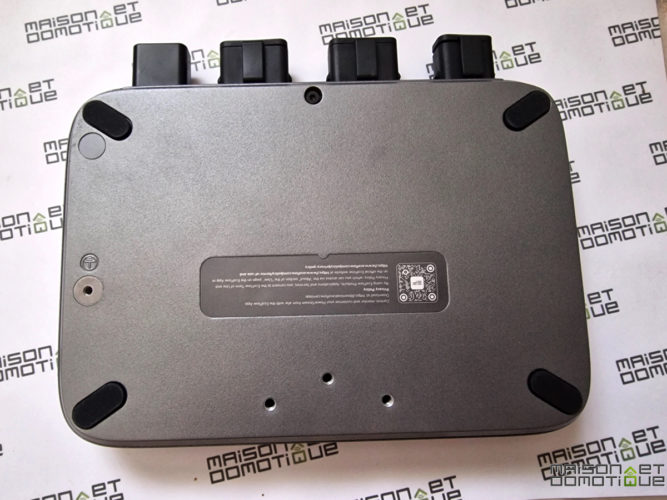
The plug is quite compact, with dimensions of 53 × 53 × 79 mm. It has an illuminated button on the top to indicate its status, but also to control it locally or pair it with the system.
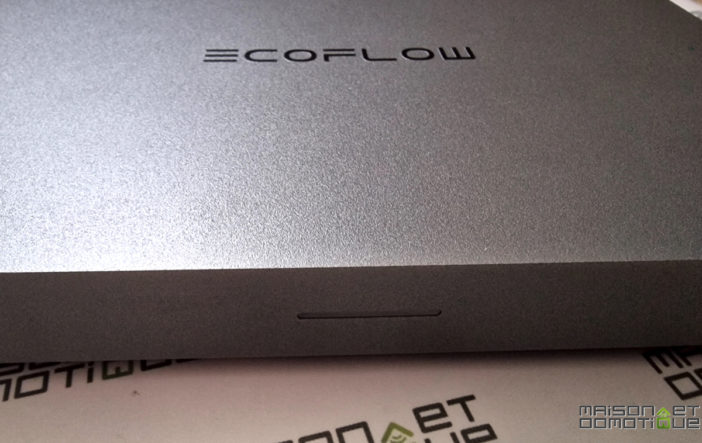
The EcoFlow smart plug is in Shuko format, compatible with most of our devices, and has a ground connection on the side (via a tab):

As for wall mounting, it is perfectly compatible with our local plugs:

These outlets, in addition to Bluetooth and Wi-Fi connectivity, are also compatible with the new Matter home automation standard, making them compatible with Apple, Google, and Amazon voice assistants. Nothing has been left to chance! Eventually, they should even be able to be integrated with third-party home automation systems like Jeedom, for those who want to expand the capabilities of these outlets. We'll come back to this in a future article.

The complete installation is therefore made up of several components. Rest assured, it's impossible to reverse the connections, as each connector is different. The manufacturer wanted a truly easy installation that anyone can install in 5 minutes.
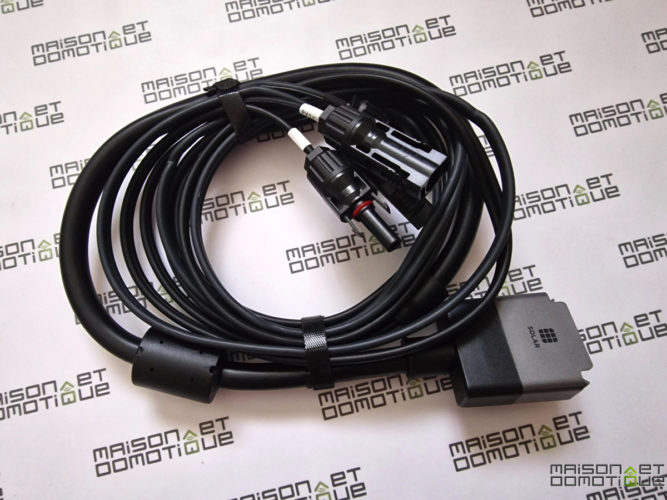
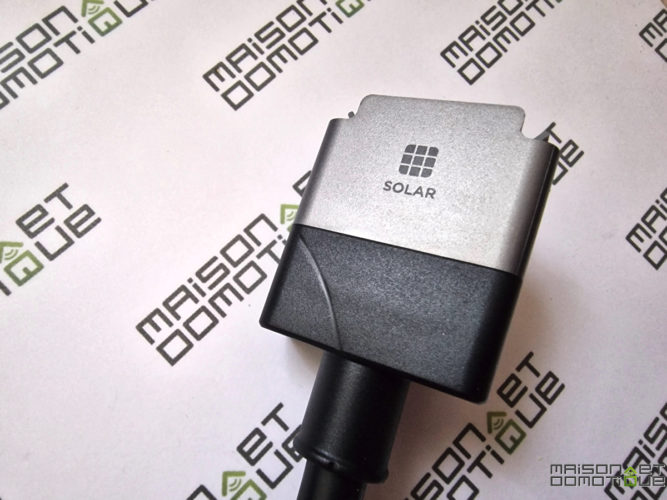
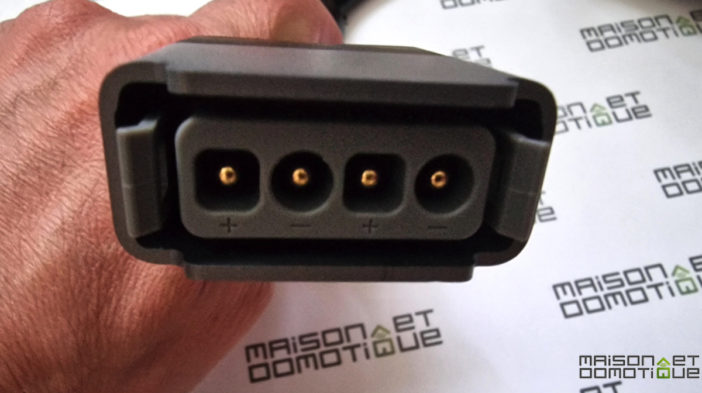
A solution suitable for balconies. But not only!

In its advertising campaign, Ecoflow emphasizes the use of the solution on balconies. Everything has been designed for a simple installation, requiring no work, making it perfect for a tenant:
I had the opportunity to test it in this configuration. For this purpose, Ecoflow sells 100W flexible panels.
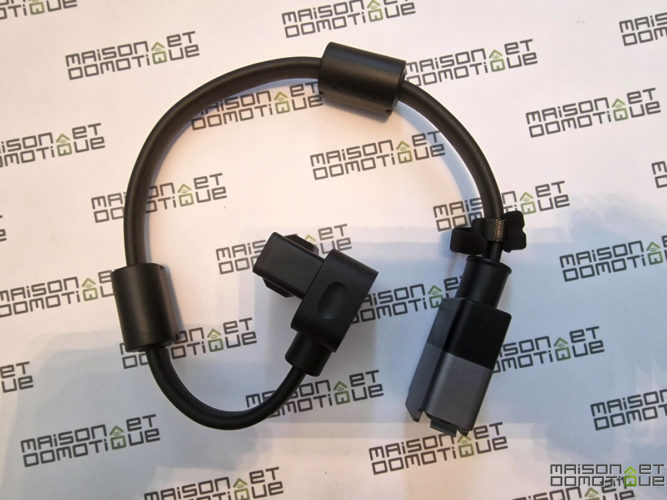
Each panel is perfectly protected upon delivery: One panel measures 1.05m by 0.61m. But above all, it weighs only 2.3kg! An extremely light weight, which won't pose a problem on a balcony railing.As you can see, the EcoFlow flexible panel is very thin:
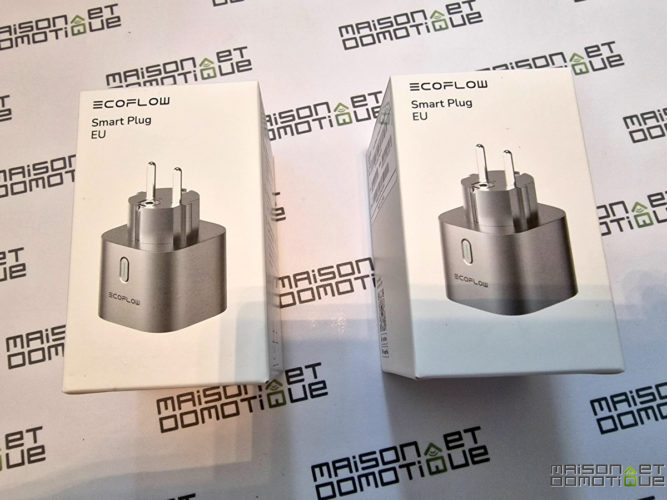
Only a small block protrudes from the top to accommodate the MC4 connectors, which are standard.
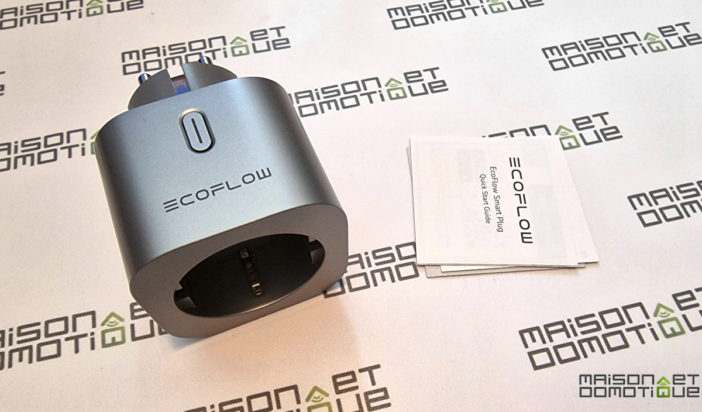
For those curious, here's a quick look at the specifications of these panels:
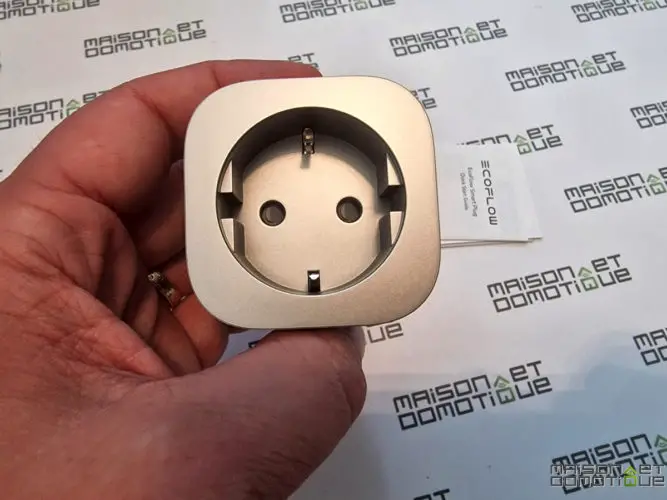
Given these specifications, and the inverter's input constraints, the panels must be connected in series two by two, then the two groups in parallel. The manufacturer explains this very well in its manual:
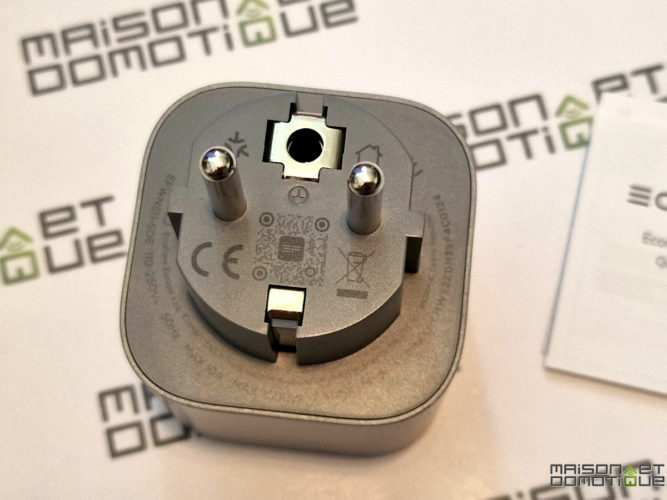
Thus, it will be technically possible to connect 8 panels to the same inverter, for a total power of 800W. But you can just as easily connect two
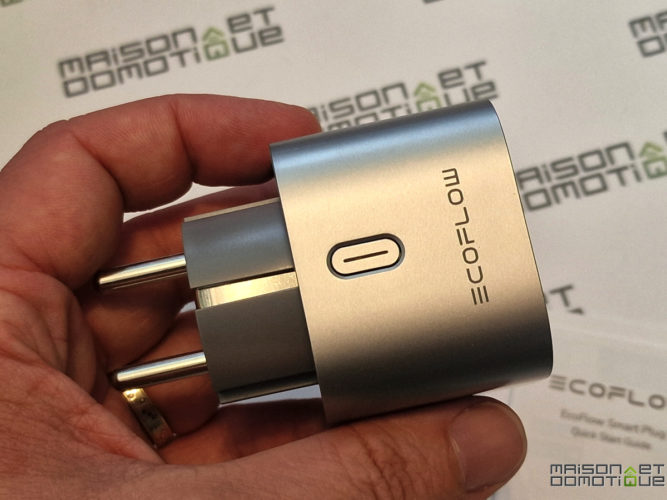
Large 400W panels, such as Sunology, for example. The MC4 connectors and the inverter's features allow for many different configurations, whether in an apartment or a house.
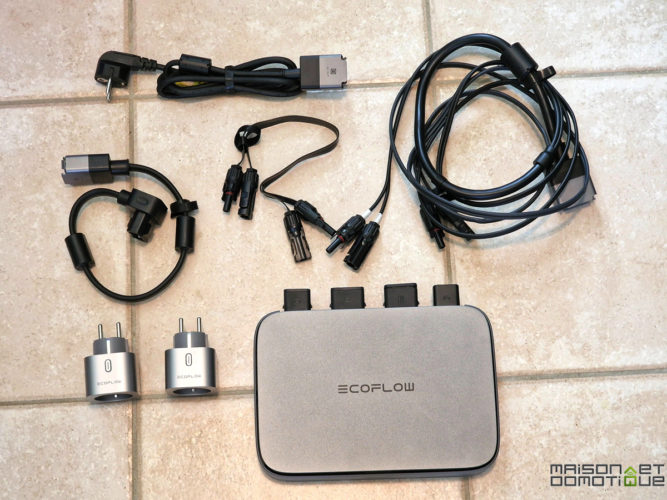
Here, to test the configuration often presented by EcoFlow, I installed the four flexible panels on a railing-like assembly. These panels, equipped with eyelets, can be secured using simple hooks or plastic cable ties.
It is then possible to use an extra-flat cable, also sold by the manufacturer, to facilitate cable routing through a door or window, without having to drill holes:
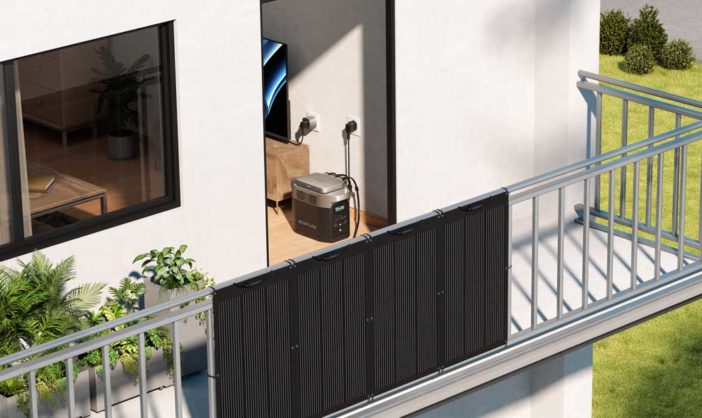
Example here with the cable routing through my bay window: the cable passes through and transmits electricity to the panels, without drilling holes, and while allowing my bay window to be closed without any problems. The other end connects to the inverter adapter cable. The inverter can then be connected to a battery from the brand, which has an expansion port:This port is normally used to connect an expansion battery to a main battery, to increase its capacity. But here, it's used to connect the EcoFlow PowerStream, which can then charge the battery via the solar panels, but also draw power from the battery to reinject it into the electrical circuit, depending on the selected operating mode.
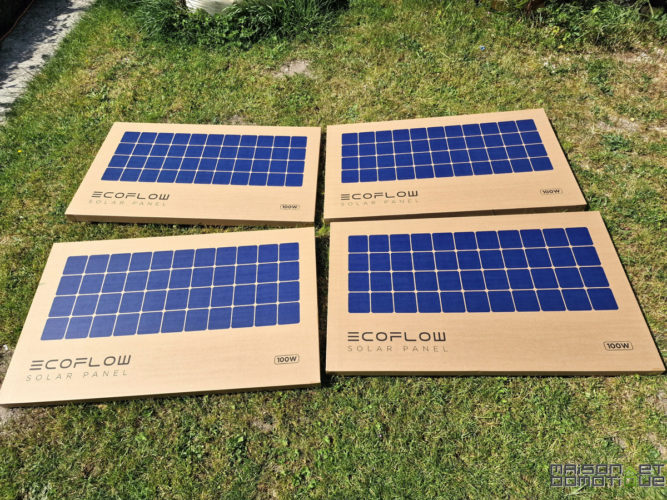
Solar panel input, battery cable, and mains power cable: everything is connected here, without any risk of misconnection:
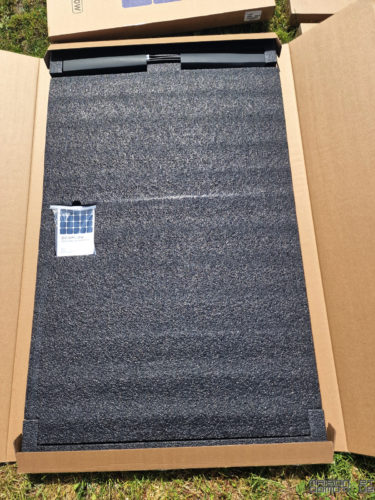
A quick note for those who would like to use an auxiliary battery to increase storage capacity: you'll need to make sure you use a battery with two expansion ports. One will be used for the PowerStream, the other for the expansion battery. Example here with the new Delta 2 Max:

If you have a battery with only one port, it won't be possible to use an extension battery. You can see the difference here between the Delta 2, which has only one port (top), and the Delta Max 2, which has two (bottom):
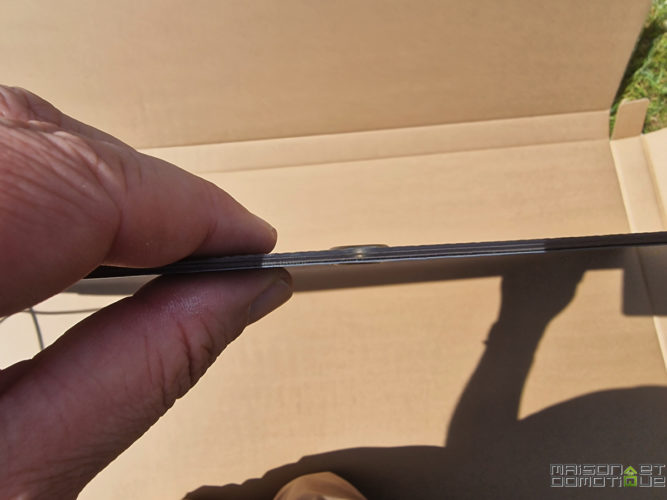
That's the physical installation of the solution! Here, to simulate the installation on an apartment balcony. But I repeat: it's possible to connect different types of photovoltaic panels, and this solution can very well be used in a house. In fact, I eventually connected my Beem panels to it, which allow me to benefit from 600Wp of power.
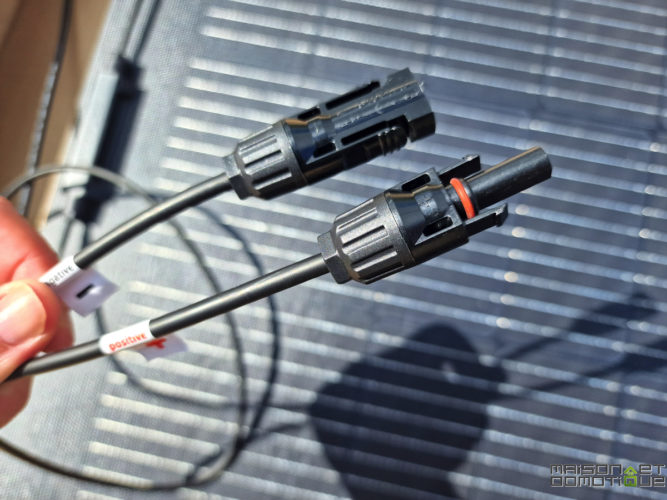
EcoFlow PowerStream also works perfectly in a house with large rigid panels.
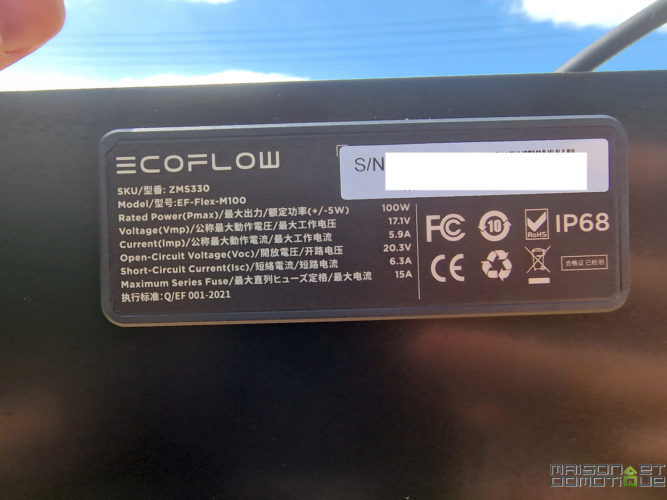
Now let's discover how to use the solution through the app, because that's where everything can be optimized. Using the EcoFlow PowerStream
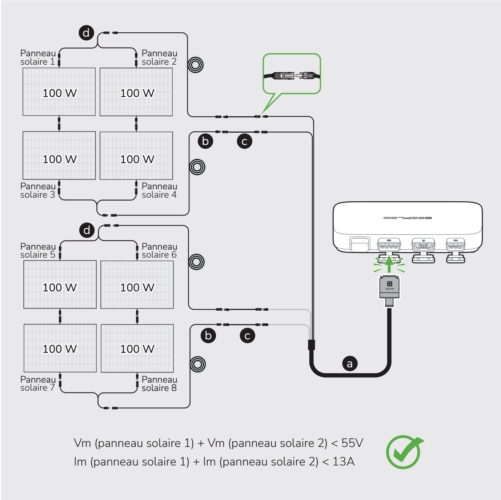
To begin, you need to add the various devices to the EcoFlow app: PowerStream, of course, but also the battery if you have one, and any connected plugs (which aren't mandatory, but are very useful!). When you launch the app, if the devices are plugged in, they are automatically detected. This is how you add the EcoFlow PowerStream and configure its Wi-Fi connection: Next, you add a “Space,” which will allow you to manage energy across different rooms if necessary. Add the connected plugs in the same way. Here, you'll need to hold down the plug's button for 3 seconds to pair it.
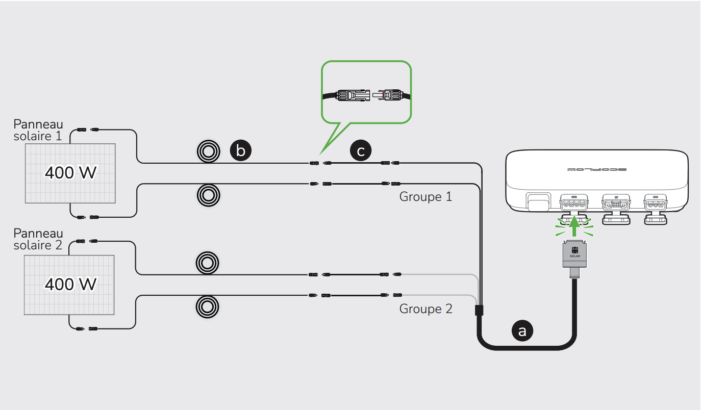
Once the connected plug is added, you'll see a control screen allowing you to turn the plug on/off, see its usage time, and the power consumption. This is standard for this type of device.

The EcoFlow PowerStream's settings are particularly interesting. In addition to adjusting the lighting level (useful if the inverter is located in a bedroom, for example), and the maximum battery discharge level, it's also possible to set the power mode, energy requirements, and automate certain tasks. The system offers two energy modes:Power Supply Priority: In this mode, the electricity generated by the solar panels will primarily power the home and appliances that require electricity. If the panels produce more than the home needs, the surplus will be used to recharge the battery.
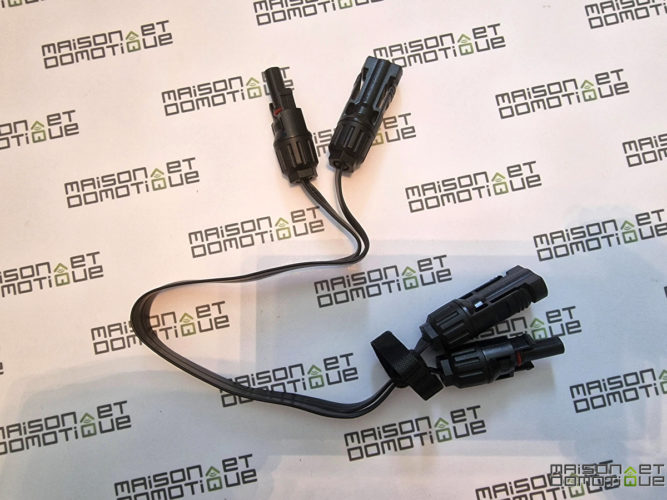
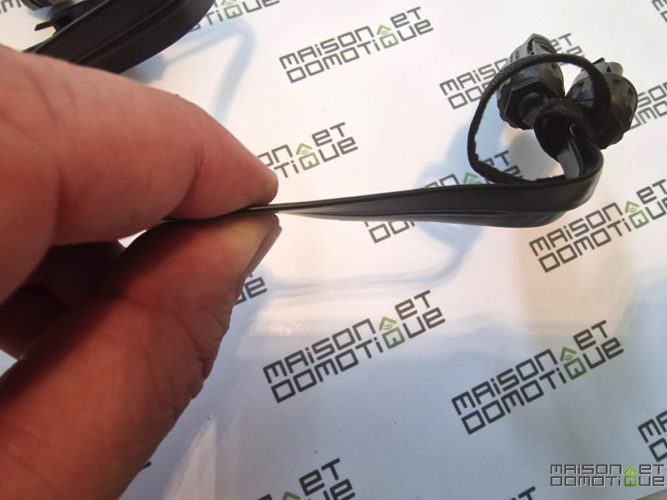
Energy Storage Priority: In this mode, the electricity generated by the solar panels will primarily power the battery to recharge it to its maximum capacity. Once the battery is fully charged, if there is still solar production, the electricity will be used to power the home. Note that if neither the battery nor the home needs electricity, the EcoFlow PowerStream simply shuts off production: no surplus will be sent to the general grid.
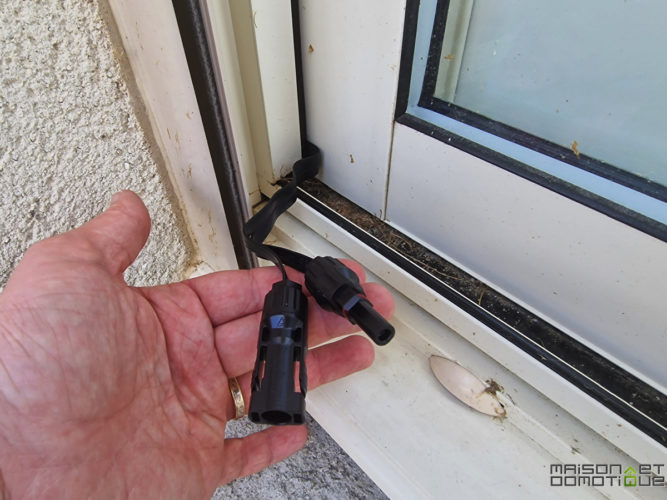
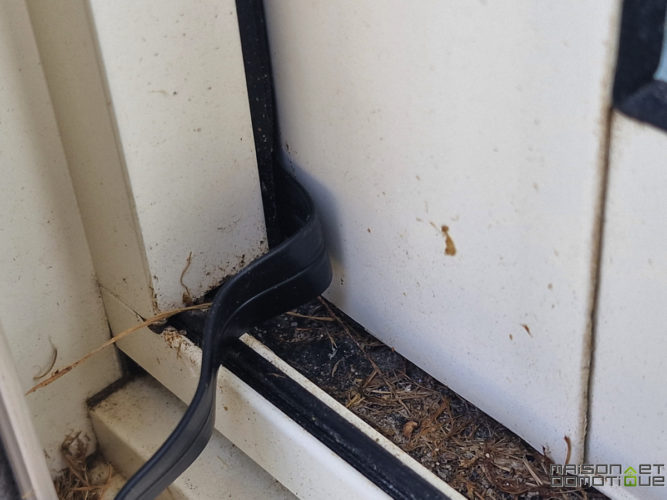
The other interesting option concerns the “AC output power requirement.” To determine the amount of electricity needed by the home, the system relies on two elements:
EcoFlow connected outlets: each connected outlet measures the power consumption of the device it controls in real time. For example, if I have one outlet consuming 100W, and a second outlet consuming 30W, the system knows that the home already needs 130W. The system can therefore already send this power if it is available.
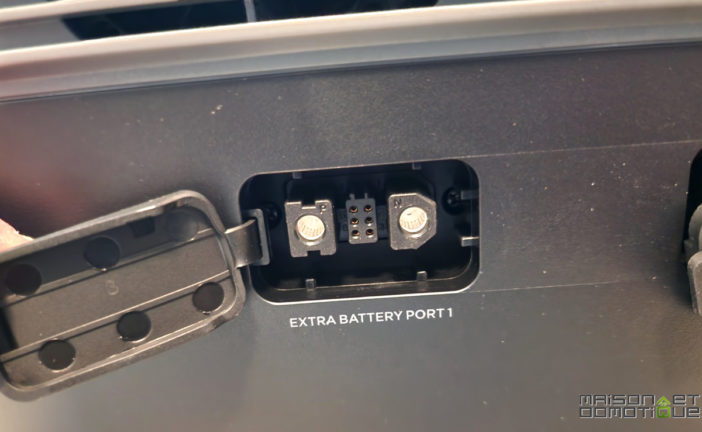
“AC outlet electricity requirement”: Here, you must enter the average electrical load of the house. The electrical load is the house's electricity consumption, whether you are present or not: the home always has a minimum consumption due to refrigerators, freezers, internet box, appliances on standby, VMC, etc. Simply look at the power consumed on your electricity meter when the house is in a minimum situation, as well as when you are away. This value will be reported in the AC outlet's energy requirement (maximum 800W).

Using these two pieces of information, the PowerStream system knows how much energy to send to the home. If, for example, my electrical load is 200W, and the outlet controlling the pool pump requires 80W, then the system deduces that ideally 280W should be sent to the house's circuit. If the solar panels produce well, say 350W, then 280W is fed into the house's electrical system, and 70W is sent to the battery for charging.
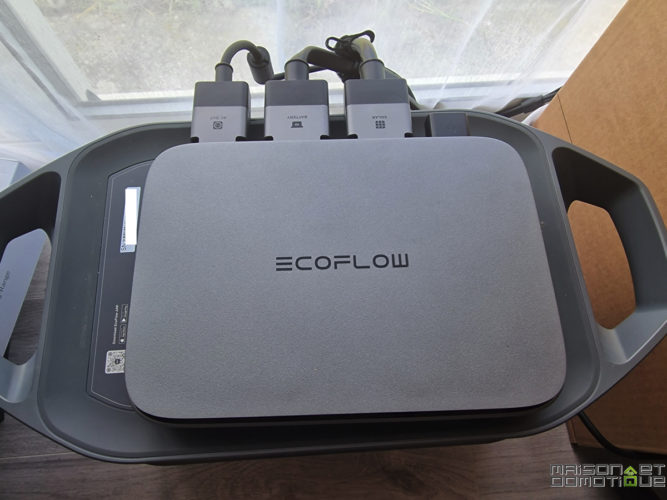
If, on the other hand, the solar panels only produce 200W, the system will send these 200W to the house's electrical system, but will also draw 80W from the battery to compensate.
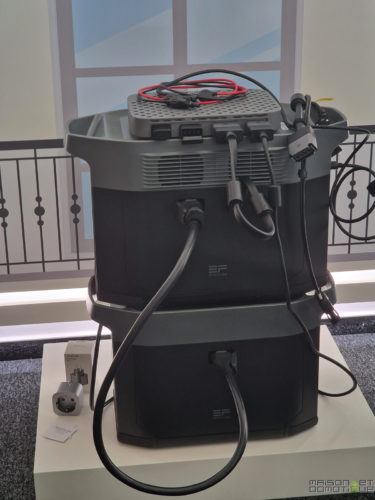
Operation, of course, depends on the selected mode. And this mode can be adjusted automatically via scheduled tasks: here, for example, I prioritize energy storage from 8 a.m. to 8 p.m., and power supply from 8 p.m. Since I have solar panels other than these EcoFlows, I know that my home generally has zero consumption during the day. So I take advantage of this to recharge the EcoFlow battery. However, from 8 p.m., when I no longer have much solar production, the battery takes over to reduce the amount of electricity coming from the common grid. This reduces my consumption day and night, whereas previously I only had a reduction during the day, with a surplus lost to the street :/
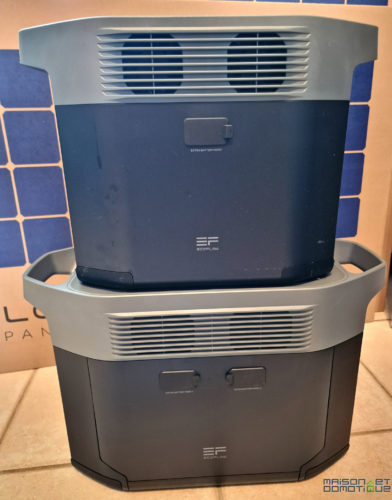
It is also possible to adjust energy demand using smart plugs, which can be programmed. Here, for example, I activate my pool pump from 9 a.m. to 9 p.m.: this allows it to be powered by solar energy, while reducing battery consumption in the evening.

Here, we see that the panels produce 231W: the connected outlets only require 87W, the rest is sent to the battery for charging. Once the battery is fully charged (screenshot 2), the entire amount is sent to the household circuit.
You can also monitor charging or energy usage on the screen dedicated to the battery: a new “DC” input and output have appeared, corresponding to the inverter. You can also monitor the operation in the “Space” section of the application, which is particularly useful if you have several EcoFlow PowerStreams:
I particularly like the circuit animation, which illustrates energy distribution very well:
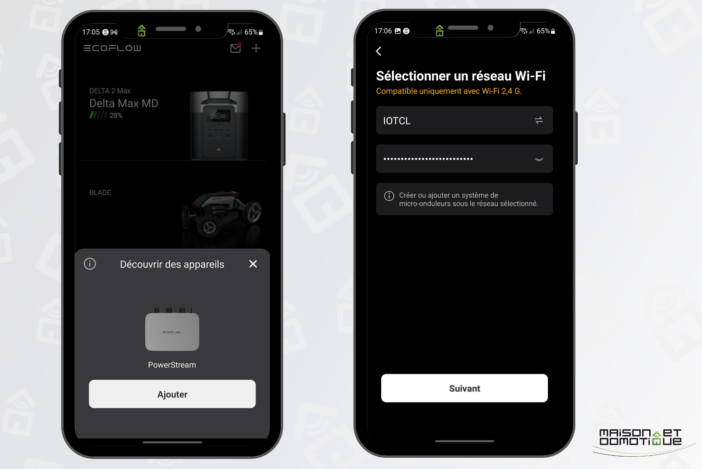

The app also allows you to track all the data graphically, by day, week, month, or even year. You can track solar production and the amount of energy used by the home from solar and battery power:
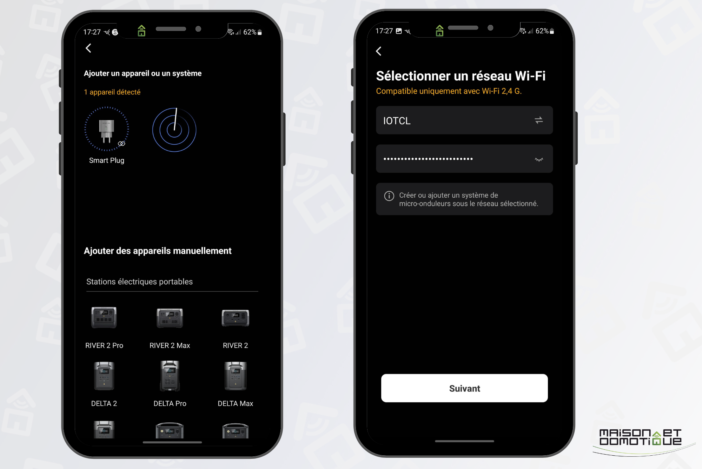
All this with an estimate of the savings achieved, since it's possible to enter the price per kilowatt in the app (there's no distinction between off-peak and peak hours, but this gives you a rough idea of the savings on your bill).

The connected plugs also benefit from consumption monitoring over the same periods.
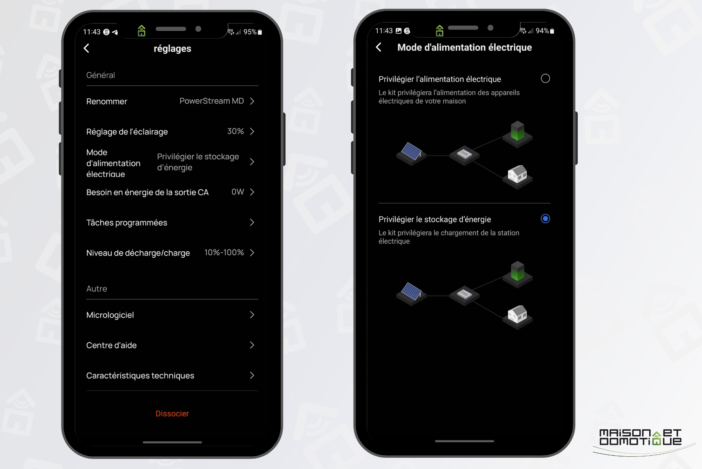
As you can see, EcoFlow is no longer limited to the portable batteries that made its reputation, but offers a real energy management solution for homes! Solar or battery injection, battery charging, appliance control, and consumption monitoring with outlets… It's very comprehensive! And yet very simple to use, with the system automatically adapting intelligently. The only thing missing here, in my opinion: a system capable of tracking the home's overall consumption so that the system can manage energy distribution in real time, without having to manually enter a value for the electrical base. We're forgetting the dongle to insert into the Linky meter, which is too specific to France. But a metric clamp-on system to clip around the home's phase, and communicating via Wi-Fi, like the Shelly EM, would be great! And it's an option that's not at all excluded ;-)
- One last important point: like all hybrid inverters, in the event of a power outage, this one shuts down. This is a safety feature. It will therefore not be able to reinject electricity to power the house in the event of a power outage. However, if the battery is charged, it is possible to connect devices directly to the battery's 230V outlets to power them during the power outage (or even connect the battery to the source inverter to power the entire house!).
- Conclusion
While I was somewhat disappointed with the operation of the Lancey Capella to store excess solar production, I must say that this EcoFlow PowerStream is close to perfection!
However, my opinion is divided on two points.
- First, the solution was initially presented as a perfect system for balconies. Regarding operation, the equipment provided to avoid any work (especially the extra-flat cable for windows), the very light weight of the whole system, etc., nothing to complain about! The solution is virtually plug-and-play and won't pose any safety issues with railings (though be sure to ask the condominium manager for permission…). Moreover, this system can be installed on an apartment balcony railing, a house terrace railing, or even a fence. My only criticism is the tilt of the panels, which are completely vertical. While production may be good in winter, it will inevitably be reduced in summer, a season when the sun is very high, and this generally requires adjusting the panel orientation to a more horizontal position. Regarding the panels attached to the balcony, the Sunology City solution seems better thought out, since it allows for panel orientation. With the EcoFlow panels, you may have to do some tinkering to optimize the orientation on a balcony.
- But as we have seen, this solution is not limited to balconies. And this is the point that interests us! Given that it can be connected to various photovoltaic systems, it is very versatile: you can opt for a complete EcoFlow kit equipped with a battery and solar panels, whether flexible or rigid; but we can just as easily opt for an EcoFlow PowerStream kit with battery to connect a solution that we already have, such as
Sunology
,
Sunethic
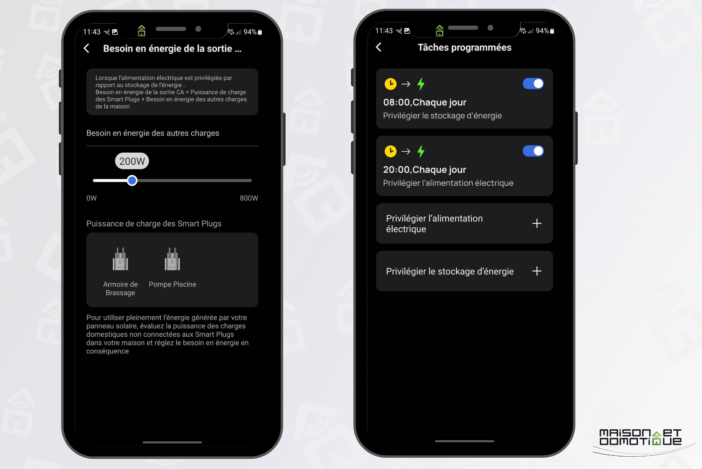
, or even
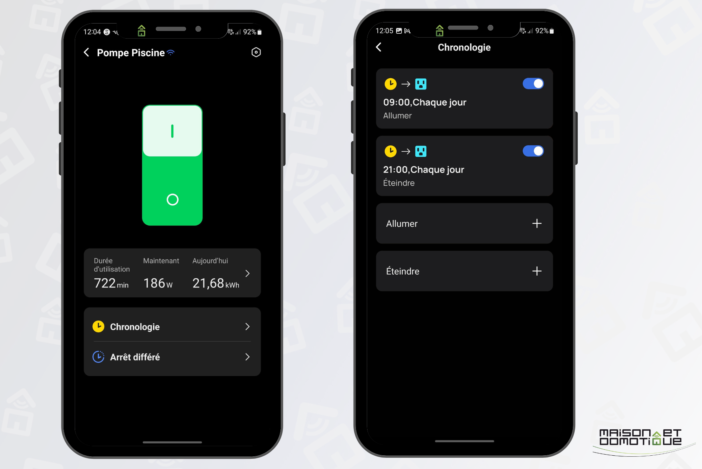
Beem
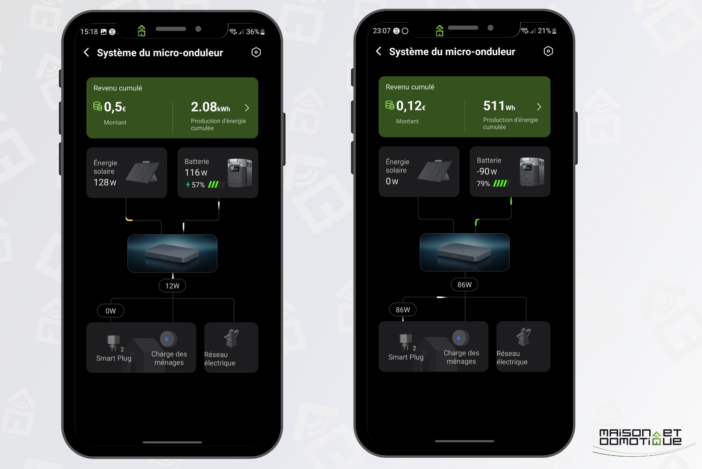
, to name just a few (this is of course valid for any photovoltaic panel that you may have, provided that they respect the voltage and power constraints of the PowerStream). In this case no need for the micro inverter of the solar station, we connect the MC4 sockets of the panels directly to the EcoFlow socket of the PowerStream! And we immediately obtain a much more intelligent system, capable of reducing the home's electricity consumption both day and night. The system allows you to combine all the advantages:
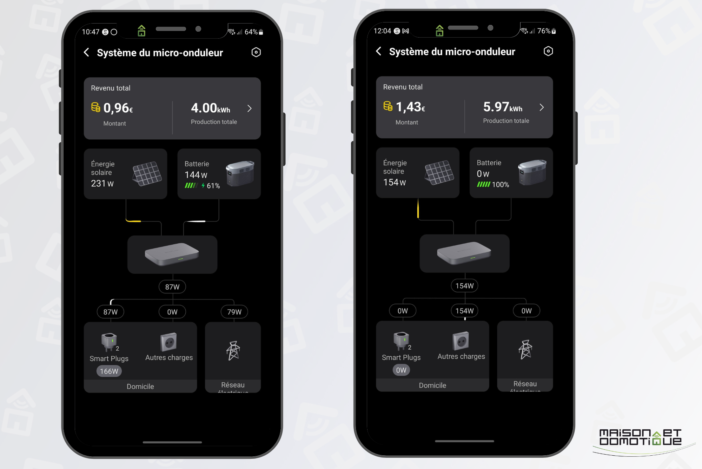
During the day, solar energy is consumed instantly by the home if it is needed. The surplus is used to recharge the battery
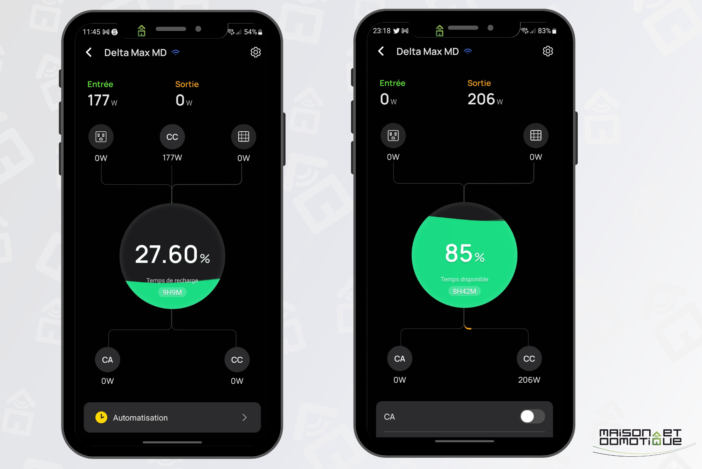
at night, or when solar production is too low, the battery can power part of the home

During off-peak hours, it is also possible to configure automatic battery recharging, which will restore this energy during peak hours. Even if the savings are less interesting than with free energy from the sun, there are still some savings to be had.
Concerning the cost, the
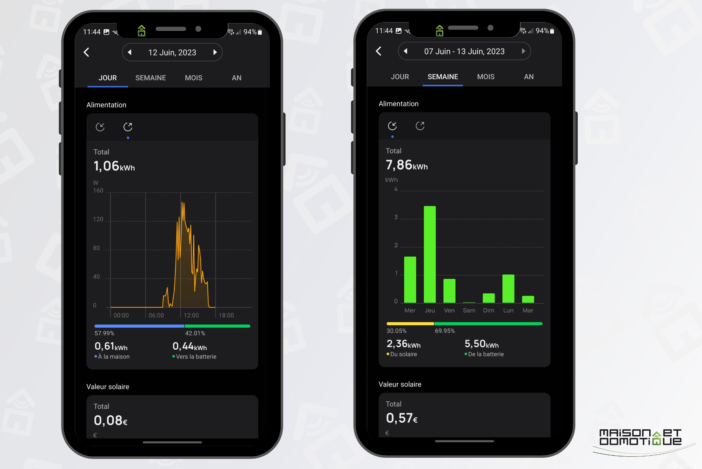
PowerStream itself costs €369

If you already have solar panels and an EcoFlow battery, this will be the only investment you need to make (+ the specific cable for connecting to the battery). If not, the manufacturer offers various kits that integrate solar panels and a battery. If you opt for a
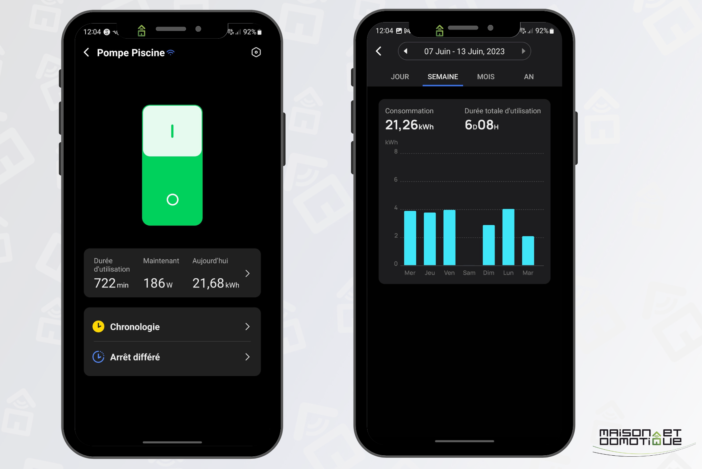
PowerStream kit + 1kWh battery, for example, the whole package costs “only” €1,207: a price well below the €2,000 price of the Lancey Capella battery, with a higher storage capacity and more optimized operation. Admittedly, we don't have the heating component of the Lancey solution, but ultimately, that doesn't interest many people, as the most sought-after feature is battery energy storage and reinjection. And on this point, EcoFlow offers a truly excellent solution! In short, I'm sold! By combining solar, battery, and even home automation, EcoFlow truly offers a tailored solution for optimizing your solar production, day and night. It's very easy to set up and completely autonomous, unlike the source inverter I installed, which required manual intervention. Whether you live in an apartment or a house, whether you own or rent, you can enjoy a solar installation with a battery. Many of you asked for a Plug&Play solution to connect a battery to a solar station, and here it is!


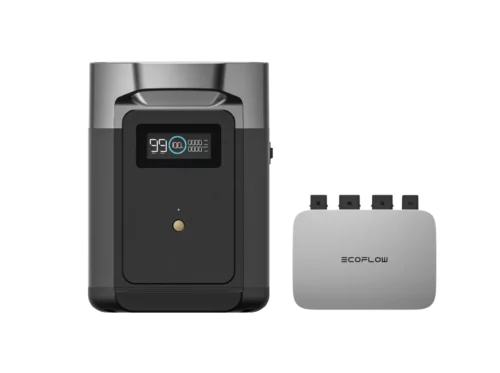
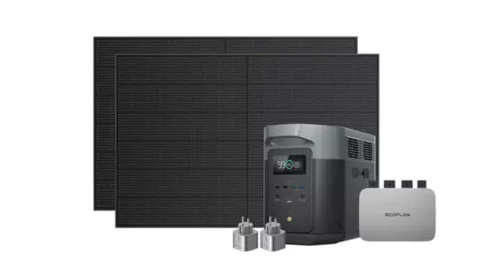
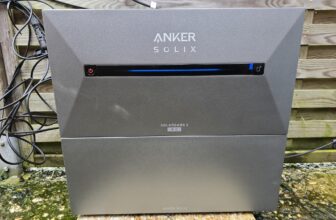
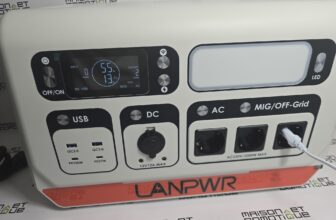
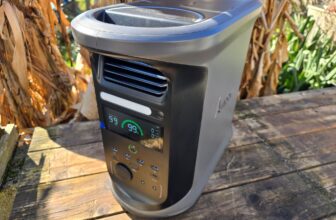
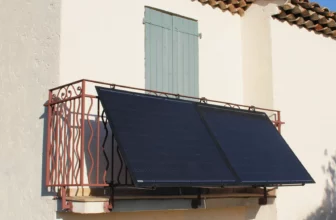

Please remain courteous: a hello and a thank you cost nothing! We're here to exchange ideas in a constructive way. Trolls will be deleted.